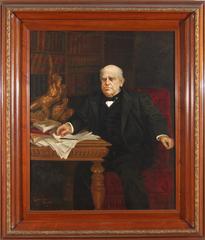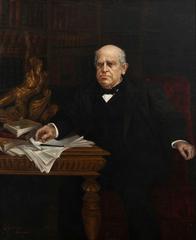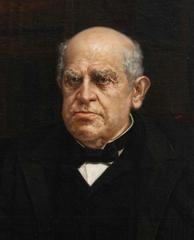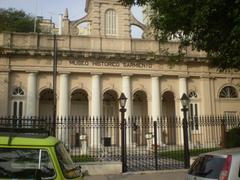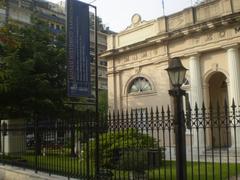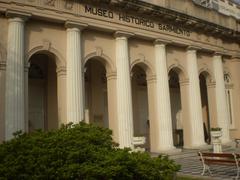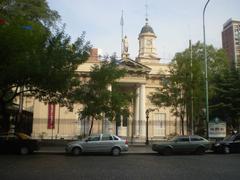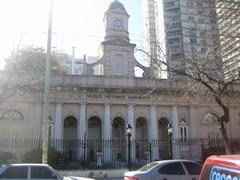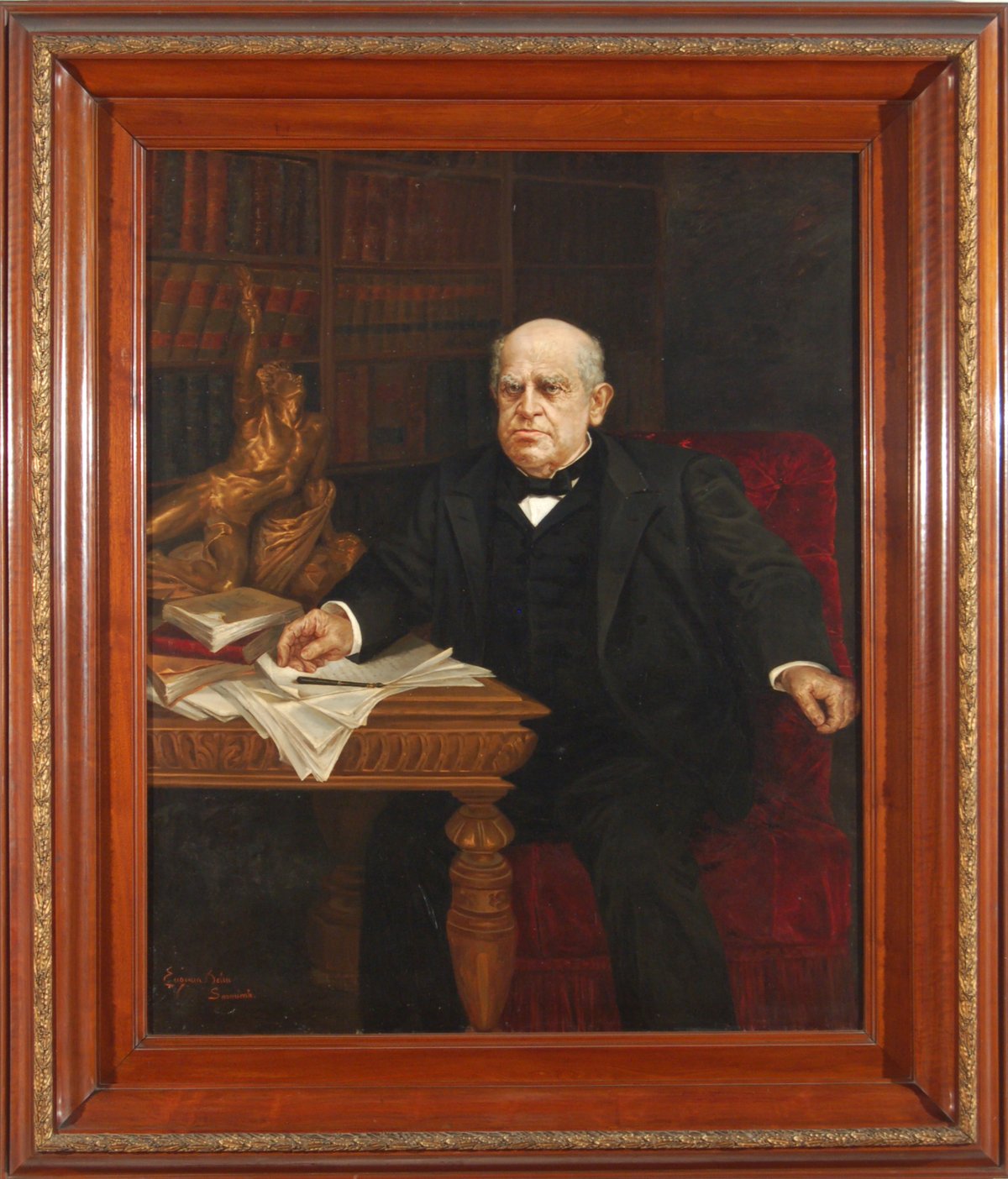
Sarmiento Historic Museum: Comprehensive Guide to Visiting Hours, Tickets, and Buenos Aires’ Historical Sites
Date: 14/06/2025
Introduction
The Sarmiento Historic Museum (Museo Histórico Sarmiento), located in the picturesque Belgrano neighborhood of Buenos Aires, stands as a testament to Argentina’s educational and political transformation in the 19th century. Housed in a beautifully preserved neoclassical mansion designed by Juan Antonio Buschiazzo, the museum celebrates the life and achievements of Domingo Faustino Sarmiento—Argentina’s seventh president and a pioneering advocate for education reform. The building itself is a significant historical landmark, having served as the seat of the National Government during key moments in Argentina’s journey toward unity and modernization (Museo Histórico Sarmiento Official Website; Google Arts & Culture).
This guide offers detailed visitor information, including museum hours, ticketing, accessibility, highlights of permanent and temporary exhibitions, and tips on exploring the wider historical landscape of Buenos Aires. Whether you are a history enthusiast, educator, or traveler, the Sarmiento Historic Museum provides an immersive experience that bridges Argentina’s past and present.
Table of Contents
- Early History and National Significance
- Domingo Faustino Sarmiento: Visionary Reformer
- Architectural Features and Historical Setting
- Museum Collections and Exhibitions
- Visitor Information: Hours, Tickets, and Accessibility
- Guided Tours, Special Events, and Travel Tips
- Exploring Belgrano and Nearby Attractions
- Frequently Asked Questions (FAQ)
- Conclusion and Resources
Early History and National Significance
The Sarmiento Historic Museum is intrinsically tied to Argentina’s period of nation-building. Originally constructed between 1869 and 1872, the mansion served as the seat of the National Government during Buenos Aires’ autonomy and later as the Congreso Nacional during the 1880 federalization crisis (Britannica: History of Argentina; Lonely Planet). The building’s neoclassical architecture reflects the aspirations of Argentina’s elite during a pivotal era of modernization.

Domingo Faustino Sarmiento: Visionary Reformer
Domingo Faustino Sarmiento (1811–1888) was a leading figure in Argentine history, renowned for his commitment to education, democracy, and civil society. Rising from modest beginnings, Sarmiento became the seventh President of Argentina (1868–1874) and instituted transformative reforms, including the expansion of free, compulsory, and secular education. His embrace of Enlightenment ideals and study of educational systems abroad fueled significant progress in literacy and nation-building (Britannica: History of Argentina).
The museum’s collection showcases his legacy through personal belongings, manuscripts, correspondence, and first editions of his seminal works—most notably “Facundo” (1845), in which he championed civilization and progress.
Architectural Features and Historical Setting
Designed by Juan Antonio Buschiazzo, the museum’s building is an exemplary model of Italian Neo-Renaissance architecture (Google Arts & Culture). Its symmetrical façade, arched windows, and clock tower contribute to its prominence in the Belgrano neighborhood. The structure was originally part of Belgrano’s civic center, alongside the public library and civil registry, and reflects the city’s late 19th-century transformation. Inside, visitors encounter high ceilings, grand staircases, decorative plasterwork, and period furnishings, all preserved to convey the ambiance of Sarmiento’s era.
Museum Collections and Exhibitions
Permanent Collections
- Historical Artifacts: Sarmiento’s personal desk, bed, medals, and clothing; original furniture from his residences.
- Manuscripts and Documents: Letters, presidential decrees, rare books, and annotated first editions.
- Photographs and Portraits: Including a portrait by his granddaughter, Eugenia Belin Sarmiento.
- Educational Materials: 19th-century textbooks, teaching materials, and school furniture.
- Political Documents: Papers related to civil rights, immigration, and urban modernization (Museo Histórico Sarmiento).
Temporary and Rotating Exhibitions
Regular thematic exhibitions explore:
- The role of women in 19th-century education.
- Immigration and nation-building.
- Technological innovations of the era.
Art and cultural programs inspired by Sarmiento’s writings, as well as workshops and family-friendly activities, are offered throughout the year.
Library and Research Resources
The “Ismael Bucich Escobar” Library and Sarmiento’s private archive house over 15,000 volumes and rare documents. Access is available by appointment for researchers.
Visitor Information: Hours, Tickets, and Accessibility
Address: Juramento 2180, Belgrano, Buenos Aires (Museo Histórico Sarmiento Official Website)
Getting There: Accessible via the D line of Buenos Aires subway (Subte), Juramento station, and multiple bus lines.
Opening Hours:
- Tuesday to Sunday: 10:00 AM – 6:00 PM
- Closed on Mondays and public holidays.
Admission:
- Free entry for all visitors (verify on the official website for changes).
- Occasionally, there may be a modest fee for special exhibitions.
Guided Tours:
- Available on weekends and by appointment for groups.
- Tours are conducted in Spanish; advance booking is recommended.
Accessibility:
- The museum is wheelchair accessible in most areas, with ramps and staff assistance.
- Due to the building’s historic nature, some areas may have limited access; inquire in advance for specific needs.
Photography:
- Non-flash photography is generally permitted. Some restrictions apply for delicate artifacts.
Guided Tours, Special Events, and Travel Tips
- Guided Tours: Enhance your visit with scheduled tours that delve into the building’s architecture and Sarmiento’s historical context.
- Special Events: The museum regularly hosts temporary exhibitions, lectures, workshops, and educational activities. Check the official website and social media for the latest schedule.
- Travel Tips:
- Use public transport due to limited parking.
- Combine your visit with a tour of Plaza Belgrano and nearby cultural sites.
- For non-Spanish speakers, translation apps or a bilingual guide are recommended.
Exploring Belgrano and Nearby Attractions
The Sarmiento Historic Museum is situated in Belgrano, a district rich with history and culture. Nearby attractions include:
- Plaza Belgrano: A leafy square ideal for relaxation.
- Museo de Arte Español Enrique Larreta: A short walk away, featuring Spanish art and architecture.
- Barrancas de Belgrano Park: Enjoy scenic views and local culture.
For more ideas, see A History Lover’s Guide to Buenos Aires.
Frequently Asked Questions (FAQ)
Q: What are the Sarmiento Historic Museum’s opening hours?
A: Tuesday to Sunday, 10:00 AM to 6:00 PM; closed on Mondays and public holidays.
Q: What is the admission fee?
A: Admission is generally free. Check the official website for updates.
Q: Are guided tours available?
A: Yes, on weekends and by appointment for groups.
Q: Is the museum accessible for visitors with disabilities?
A: Most areas are accessible, but some limitations exist due to the building’s age. Contact the museum in advance for assistance.
Q: How do I get there by public transportation?
A: Take the D line of the subway to Juramento station or use one of several bus lines.
Q: Are museum labels and information available in English?
A: Most panels are in Spanish; staff can assist, and translation apps are helpful for non-Spanish speakers.
Conclusion
The Sarmiento Historic Museum is a cornerstone of Argentina’s historical and cultural landscape. Its rich collections, evocative architecture, and educational programs commemorate Domingo Faustino Sarmiento’s enduring legacy and illuminate Argentina’s path to modern nationhood. Whether you’re a local or a visitor, the museum offers meaningful insights into the country’s past and present.
For up-to-date information, including hours, exhibitions, and events, consult the official museum website. Enhance your experience with the Audiala app for guided tours and real-time updates, and explore our related guides on Buenos Aires’ top historical attractions.
References and Further Reading
- Museo Histórico Sarmiento Official Website
- Britannica: History of Argentina
- Google Arts & Culture – Museo Histórico Sarmiento
- Lonely Planet: Museo Histórico Sarmiento
- Turismo Buenos Aires – Museo Histórico Sarmiento
- A History Lover’s Guide to Buenos Aires
- whichmuseum.com
- Museo Histórico Sarmiento (mibsas.com)
